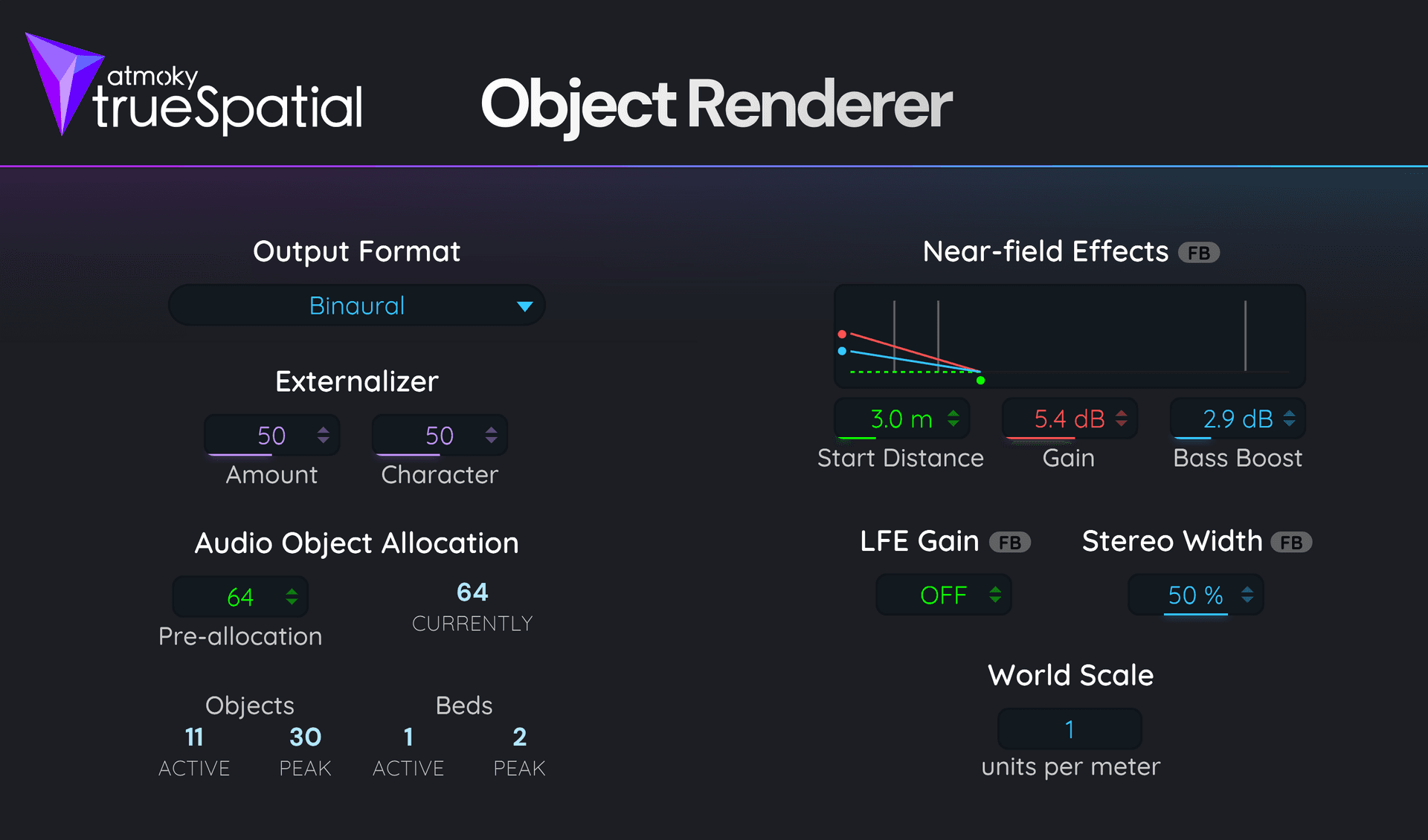Object Renderer
The Object Renderer renders Audio Objects to a binaural passthrough mix or a loudspeaker / ambisonic mix depending on the selected output format. It features a set of parameters to control the rendering process including source effects which can be granularly controlled via Metadata Plug-ins.
The Object Renderer can be seen as a virtual endpoint which terminates the Audio Object workflow by rendering the objects to a consistent and predictable audio experience across all platforms, devices, and user settings.
Besides objects (with positioning information), it also supports rendering of audio beds of any format without listener-relative positioning. This can be useful for rendering of immersive music or other content that should not be affected by the listener’s position.

Signal Routing
The plug-in can be inserted into Effects busses in the Master-Mixer Hierarchy.
As it renders Audio Objects, the Bus Configuration should be set to
Audio Objects. If the output format of the plug-in is set to binaural, the
output will automatically conform the passthrough mix format, so it won’t be
spatialized further by the user’s endpoint.
So your Master-Mixer Hierarchy could look like this
and you would route SFX you want to be rendered as Audio Objects to the
Audio Object Renderer Bus, and music and ambience to their respective busses.
Parameters
The plug-in has a set of main parameters and a set of fallback metadata parameters. The main parameters are described below.
The fallback parameters are marked with FB in the UI and are used in case an audio object does not have the corresponding metadata attached. For a description of the metadata parameters please see the Metadata Plug-ins page.
Output Format
Via the output format dropdown, the plugin can be set to output any of the output formats supported by Wwise. Additionally, the output format can be set to “Same as parent” or “Same as main mix”. This instructs the plugin to match its output format to that of the parent bus or the main mix, respectively. In either case, there is an option to prefer either binaural or stereo output in case the output format has two channels.
Number of Sources to pre-allocate
Per default, the plug-in will allocate memory to support 64 simultaneous Audio Objects. It will automatically allocate more memory if more Audio Objects are sent to the plug-in. If you know beforehand that you will have more Audio Objects, you can increase this number to avoid runtime allocations.
Externalizer Amount and Character
The Externalizer module can be used to add a sense of space to the rendered signal. This can help to bring sounds out of the head of the listener, especially for dry sounds.
The Amount parameter controls the intensity of the effect. With the
Character you can make the effect more airy by dialing it up, or more
warmer by dialing it down.
When the Amount is set to 0, the Externalizer is bypassed.
The externalizer effect is only applied to the binaural output format.
World Scale
Use this parameter to tell the Object Renderer about the coordinate system scale.
Some game engines/projects use coordinate systems where one unit of length does not correspond to one meter. In such cases, this parameter must be altered to tell the Object Renderer how many units go into one meter.
For example, in a typical Unreal project where one unit of length equals one centimeter, the World Scale must be set to 100 (100cm = 1m).
Setting the world scale incorrectly leads to an unrealistic virtual head size. This will affect the parallax rendering (each ear is a separate listener) and might make the nearfield effects cut in at unrealistic distances.
UI Stats
The user-interface will show live stats in case the Profiling version of the
soundengine is used.

” />
The stats in the lower left of the UI will show the number of processed audio objects and audio beds.

The Near-field Effects widget will display audio object distances with gray vertical lines to get a feeling how many sources are currently near the listener. This helps dialing in the near-field effects parameters.